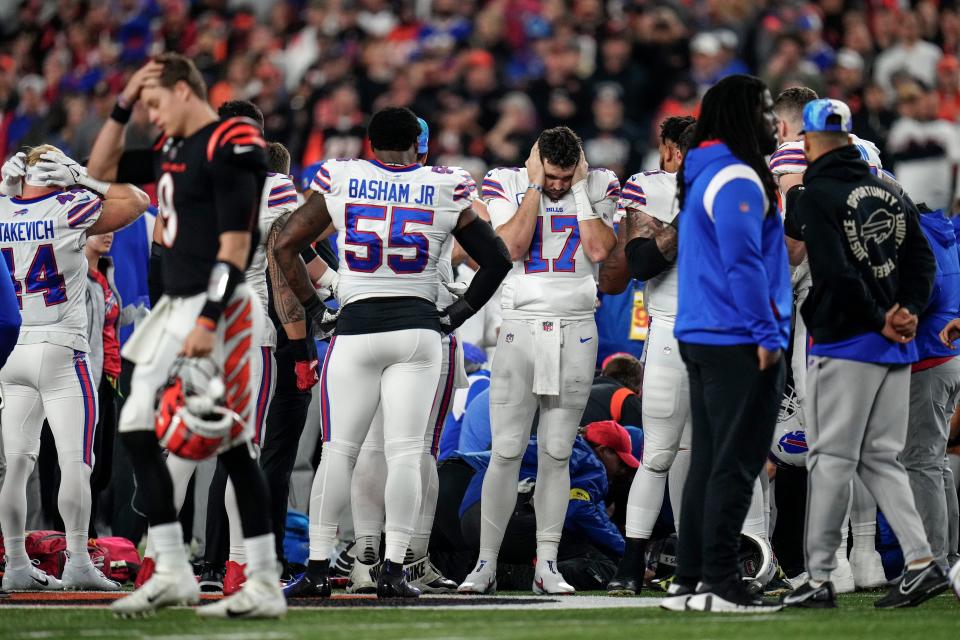Damar Hamlin tragedy adds another layer to football's danger zone | KEN WILLIS
Not sure anyone can add any thoughts to the Damar Hamlin story that haven’t already been registered.
If ever pressed to consider the possibility of what we watched Monday night, yes, we probably could’ve imagined it, regretfully. We have, after all, seen young men carried off fields — and rinks and courts — with crippling and/or life-threatening injuries.
The next awful step is what we saw Monday from Cincinnati, piped into homes across the land, where moms and dads were among those watching and, perhaps, wondering about this game and their boys.
Eventually, talk will turn to what’s next for football. Not the NFL, but football as a whole.
Listen, it’s not like football was enjoying a carefree run of marketing tailwinds. While the professional and college game continues to thrive financially and through any other consumer metric out there, the game’s grassroots image has taken some hits, so to speak.
“I would never let my kid play football.”
We’ve all heard it. Sometimes it comes from men who have played the game at the highest level and benefited — at least financially — from the endeavor.

I SEE THE FUTUREBuckle up, here comes 2023, and look what's ahead | KEN WILLIS
HOLD YOUR POWDERRooting for rivals? You can't spell, 'nonsensical fan' without S-E-C | RYAN PRITT
Until a generation or two ago, “getting your bell rung” was just part of the game. A guy would stagger to the bench, and maybe five minutes later, assuming he could correctly count the number of fingers his coach was holding up, he was back in there.
It wasn’t until some very high profile former players began turning up in very bad cognitive shape that things started to change. It wasn’t quick, and it took some legal action to prod things along, but eventually the NFL devoted an ever-growing effort to address head injuries.
To the point that, today, an appointed observer can have a player removed from a game if he takes a hit and shows the slightest sign of imbalance afterward.
But now we have this, what happened to Damar Hamlin, blunt-force hit to the chest, triggering several long medical terms that add up to something we recognize: Cardiac arrest.
If it’s confirmed that this often-fatal injury — commotio cordis, it’s called — is what put Hamlin in intensive care, more attention will surely aim at preventing future incidents like this. It’s a rarity, even among statistical rarities, but everyone will agree now that it’s a crack in the safety shield that needs addressing.
Meanwhile, football will go on, fans will tailgate, seats will be filled, and most importantly to the bottom lines, viewers will tune in.
Many athletes will steer themselves into sports with less overt dangers, with parents gladly helping with the steering. Many won’t, of course. They’ll keep playing because the rewards — actual rewards for the few, mere dreams for the other 99% — are just that: Rewarding.
Until this week, our modern concerns about football and health centered on the brain and long-term effects.
Now we have the heart and the potential — however rare — for immediate tragedy. Not sure how you begin to build defenses against a freak occurrence, but anyone who witnessed that Monday night scene knows they’ll have to try.
— Reach Ken Willis at ken.willis@news-jrnl.com
This article originally appeared on The Daytona Beach News-Journal: Damar Hamlin tragedy adds new layer to football's safety concerns

